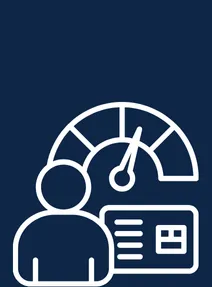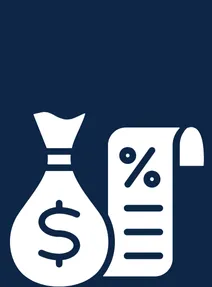Understanding Debt-to-Income (DTI) Ratio
Whether you’re a first home buyer or investor, understanding your DTI can help you plan your finances and improve your chances of loan approval.
Understanding
Debt-to-Income Ratio
Whether you’re a first home buyer or investor, understanding your DTI can help you plan your finances and improve your chances of loan approval.
What is Debt-to-Income (DTI) Ratio?
Watch this quick video for a simple explanation of how Debt-to-Income (DTI) ratio works
and why it matters for your home loan.
Your Debt-to-Income (DTI) ratio is a simple way lenders assess how much debt you have
compared to your income. It’s calculated by dividing your total monthly (or annual) debt
repayments by your gross monthly (or annual) income.
Formula:
DTI = Total Debt / Gross Income
This number helps lenders decide whether you can safely take on new debt—like a home
loan—without stretching your finances too thin.
What is Debt-to-Income (DTI) Ratio?
Watch this quick video for a simple explanation of how Debt-to-Income (DTI) ratio works and why it matters for your home loan.
Your Debt-to-Income (DTI) ratio is a simple way lenders assess how much debt you have compared to your income. It’s calculated by dividing your total monthly (or annual) debt repayments by your gross monthly (or annual) income.
Formula:
DTI = Total Debt / Gross Income
This number helps lenders decide whether you can safely take on new debt—like a home loan—without stretching your finances too thin.
Why Does DTI Matter?
In Australia, many banks and lenders use DTI as part of their risk assessment when you apply for a
mortgage or other credit. A lower DTI shows that your income comfortably covers your debt
repayments, which gives lenders more confidence.
General guidelines:
DTI under 6: Typically considered acceptable by most lenders
DTI over 6-7: May trigger closer scrutiny or limit your borrowing options
DTI above 7: Often seen as higher risk, and may make approval harder
💡 Some lenders and regulators (like APRA) encourage responsible lending by keeping high-DTI
lending within set limits.
What Debts Are Included in DTI?
Lenders usually count these debts toward your DTI:
Existing home loans
Personal loans
Credit cards (usually calculated as if fully drawn, not just your current balance)
Car loans or leases
Buy-now-pay-later accounts
Any other regular debt repayments
Why Does DTI Matter?
In Australia, many banks and lenders use DTI as part of their risk assessment when you apply for a mortgage or other credit. A lower DTI shows that your income comfortably covers your debt repayments, which gives lenders more confidence.
General guidelines:
DTI under 6: Typically considered acceptable by most lenders
DTI over 6-7: May trigger closer scrutiny or limit your borrowing options
DTI above 7: Often seen as higher risk, and may make approval harder
Some lenders and regulators (like APRA) encourage responsible lending by keeping high-DTI lending within set limits.
What Debts Are Included in DTI?
Lenders usually count these debts toward your DTI:
Existing home loans
Personal loans
Credit cards (usually calculated as if fully drawn, not just your current balance)
Car loans or leases
Buy-now-pay-later accounts
Any other regular debt repayments
How to Improve Your DTI
Pay down existing debts — focus on high-interest loans or credit cards
Avoid taking on new debts before applying for a home loan
Increase income — for example, through stable side income or a promotion
Consolidate debts — sometimes combining loans can lower your repayment burden
How does DTI affect my borrowing power?
DTI is just one factor lenders assess. They also look at:
Your deposit size
Credit score
Living expenses
However, a lower DTI can improve your chances of loan approval and potentially let you borrow
more.
How to Improve Your DTI
Pay down existing debts — focus on high-interest loans or credit cards
Avoid taking on new debts before applying for a home loan
Increase income — for example, through stable side income or a promotion
Consolidate debts — sometimes combining loans can lower your repayment burden
How does DTI affect my borrowing power?
DTI is just one factor lenders assess. They also look at:
Your deposit size
Credit score
Living expenses
However, a lower DTI can improve your chances of loan approval and potentially let you borrow more.
Need Help Assessing Your DTI?
If you’re unsure where you stand or how your DTI might impact your loan application, the team
at Win Square Finance can help. We’ll review your situation and guide you on your options.
Contact them today for a free chat about your borrowing power.
Need Help Assessing Your DTI?
If you’re unsure where you stand or how your DTI might impact your loan application, the team at Win Square Finance can help. We’ll review your situation and guide you on your options.
Contact us today for a free chat about your borrowing power.
Related Topics
Discover the five key factors lenders evaluate when assessing loan applications and learn how each plays a role in securing mortgage approval.
A one-time fee that protects the lender when your home loan deposit is less than 20%. It helps you buy a property sooner with a smaller deposit.
A high LVR could mean extra costs, while a low LVR can save you thousands. Find out why lenders care so much about this number.
Regular loan payments that cover both the borrowed amount (principal) and the lender’s charge for borrowing (interest).
Understand how lenders determine your borrowing power and what factors impact loan approval. Learn how to improve your eligibility and maximise your home loan options.
Related Topics
Discover the five key factors lenders evaluate when assessing loan applications and learn how each plays a role in securing mortgage approval.
A one-time fee that protects the lender when your home loan deposit is less than 20%. It helps you buy a property sooner with a smaller deposit.
A high LVR could mean extra costs, while a low LVR can save you thousands. Find out why lenders care so much about this number.
Regular loan payments that cover both the borrowed amount (principal) and the lender’s charge for borrowing (interest).
Understand how lenders determine your borrowing power and what factors impact loan approval. Learn how to improve your eligibility and maximise your home loan options.
© 2025 Estate Seeker.com.au - All Rights Reserved. Content on this site is for educational purposes only.
Always consult with a professional before making any investment decisions.








